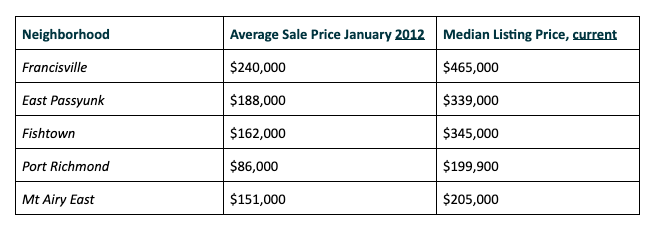Dan Pearson: Rent control is the wrong solution to a real Philadelphia problem
As expected, Kendra Brooks of the Working Families Party called for hearings on rent control at her very first City Council meeting. The purported goal is to prevent displacement as landlords raise rents in gentrifying neighborhoods. But this policy wouldn’t fix anything.
Philadelphia isn’t a city of apartment buildings, like New York or Berlin. Rowhomes are our most common housing stock, making us unique among American cities, and for centuries those rowhomes were our answer to affordable housing, for both owners and renters.
What happens to that housing stock if Philadelphia adopts rent control? Because each rowhome is owned individually, landlords face a much greater temptation to sell in the face of controlled rents and skyrocketing real estate values. Simply put, selling off one rowhome in Philly is easier than bringing an entire apartment building to market in New York.
Besides, even in cities with more apartment buildings, rent control has failed. No one describes New York as a citadel of affordable housing. And the only beneficiaries of its policy are a tiny number of leaseholders lucky enough to have lived there long enough to qualify for the program. In Berlin, illegal leases have proliferated as rent-controlled tenants sublet their apartments for market rate, often splitting the increase with the landlord, which just undermines the purpose of the program. These issues aren’t new. Even in Ancient Rome, price-fixing schemes led to shortages.
There is another way to protect the affordability of our rowhomes: build more rental housing on our commercial corridors and in Center City.
Besides, even in cities with more apartment buildings, rent control has failed. No one describes New York as a citadel of affordable housing.
While new development often shoulders the blame for rising real estate prices in Philadelphia, those pointing fingers are actually mistaking an effect for a cause. In reality, new development and rising real estate prices are both results of the same trend. Philadelphia’s college graduates are increasingly choosing to stay in town after graduation. That’s great, but without enough new rental housing being built, these graduates have to look in our rowhome neighborhoods for affordable housing, where they compete with existing tenants for a limited supply of homes.
If neighborhoods on the periphery of gentrification are to remain affordable, the gentrifiers will need housing in neighborhoods closer to Center City, which is what many of them actually want. But without new apartments, and if rent control is suppressing their profits, guess what landlords in gentrifying neighborhoods will do in the face of the current real estate landscape? I’d bet on selling. Look at home prices in some neighborhoods from eight years ago and today.

If the city is serious about expanding the affordable housing market, it has to adjust the zoning code to allow for more multi-family and multi-story dwellings. And it should target these apartment buildings in areas where it makes the most sense:
- Along the Broad Street Line and the Market-Frankford El, where tenants are less likely to need a car.
- On Point Breeze Avenue, where renters could help support a stronger commercial district, bringing jobs and access to the entire neighborhood.
- Near hot spots like East Passyunk, Frankford and Girard Avenues.
New housing in those areas would protect existing tenants in other neighborhoods who need affordable housing by diverting their competition into new market-rate housing in areas where young adults want to move anyway.
Tokyo has successfully lowered average rents by increasing the housing supply, thus giving renters more options.
If City Council is serious about helping, it should compare what other cities are doing. Look at how San Francisco has driven up housing costs with unnecessary restrictions, making the city completely unaffordable for working people. In contrast, Tokyo has successfully lowered average rents by increasing the housing supply, thus giving renters more options. The market allows them to leave bad living situations or even just shop for lower rents as landlords hustle to fill vacancies in a once-overloaded market.
Wanting to prevent displacement is admirable, but it’s important to create solutions that actually solve the problem, rather than exacerbating it. Price controls often sound like an easy solution to financial problems but they have a long legacy of failure and often just increase black market activity. We can do better. City Council, adjust the zoning code and develop areas of the city where new Philadelphians want to live.
Dan Pearson (@DanPearson266) is a South Philadelphia based urban policy enthusiast, political activist, and dad.



End councilmatic privilige for zoning and city owned property sales
Tokyo, alluring as it is, isn’t a good model for housing in the United States (or really anywhere else) from a statistical point of view. This is because housing on the for-sale market in Japan depreciates like cars do here, so there’s always affordable for-sale properties that give folks an escape hatch from the rental market. It’s not like here where old houses keep their value. In Japan, staying in an old house isn’t good for building wealth.